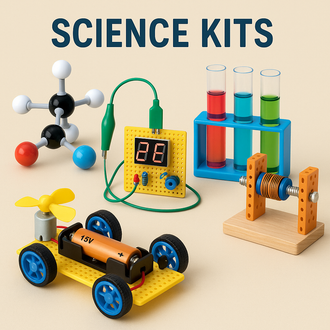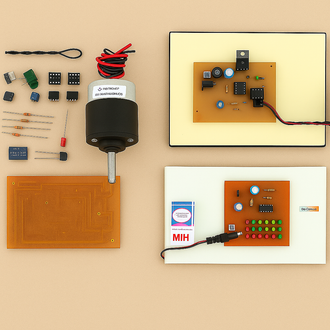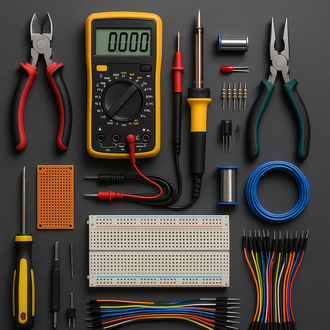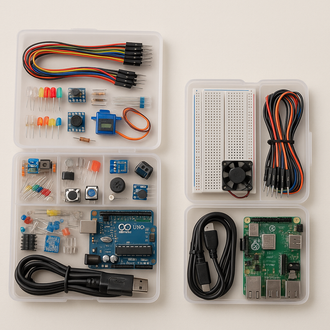
Hub Motor vs Mid-Drive: Pros and Cons for Electric Bicycle Conversions
- 06 Nov, 2025
So you’ve decided to electrify your favorite cycle—great choice. The big decision now is which drive system to choose: a hub motor that sits inside the wheel, or a mid-drive that replaces the bottom bracket and turns the chainring. This guide breaks down ride feel, climbing power, range, maintenance, cost, and installation so you can pick the ideal setup for your terrain, budget, and daily use. Wherever you are on your journey, an e bicycle conversion kit can transform your commute and weekend rides.
Quick Definitions
Hub motor: The motor is built into the front or rear wheel. It drives the bike directly at the wheel axle. You’ll find many varieties packaged as a simple, all-in-one hub motor kit with wheel, controller, and throttle/PAS.
Mid-drive: The motor mounts at the crank and drives through your bike’s gears. That means better torque multiplication and more natural pedaling feel. When researching options, riders often compare models by features and the mid drive motor price in india before deciding.
How They Work (and Why It Matters)
Hub systems apply power straight to the wheel, bypassing your drivetrain. This keeps shifting simple and reduces wear on the cassette and chain. A hub motor electric cycle feels effortless on flat routes and is wonderfully quiet.
Mid-drives use your bike’s gears like a car’s transmission, letting the motor spin in its sweet spot. On climbs, this translates to stronger hill starts and better heat management. If you ride hilly routes or carry cargo, a mid drive motor leverages your cassette to keep cadence efficient.
Pros and Cons at a Glance
| Aspect | Hub Motor | Mid-Drive |
|---|---|---|
| Climbing & Torque | Good on flats; moderate on hills unless high-power. | Excellent hill climbing using bike’s gears. |
| Ride Feel | “Scooter-like” push; constant assistance. | Natural, cadence-based assistance through drivetrain. |
| Efficiency & Range | Efficient on flat urban routes. | More efficient in varied terrain due to gearing. |
| Weight Distribution | Unsprung weight in wheel; rear-heavy if rear hub. | Low, central mass improves handling and balance. |
| Drivetrain Wear | Minimal extra wear; motor bypasses chain/cassette. | Higher chain/cassette wear; requires periodic replacement. |
| Noise | Very quiet. | Low to moderate depending on model and load. |
| Installation | Fast: swap wheel + plug harness; ideal for DIY. | Moderate: bottom-bracket fit, chainline setup, tuning. |
| Upfront Cost | Generally lower; many budget kits. | Typically higher; compare features and the mid drive motor price in india. |
| Compatibility | Wheel size/axle standard matters; works with most frames. | BB width/standard matters; full-suspension frames need checks. |
Match the Motor to Your Terrain and Use
Urban commuting & flat cities: A simple hub motor kit shines with low maintenance and smooth cruising. Start-stop traffic, short flyovers, and mixed road surfaces are handled easily.
Hilly towns & heavy riders: Choose a mid drive motor to climb efficiently and keep the motor in the optimal RPM range. You’ll feel the benefit every time the gradient bites.
Touring & mixed terrain: Both can work. If you value simplicity and easy roadside fixes, a hub motor electric cycle is stress-free. If you anticipate mountain passes or extended climbs, mid-drive wins.
Range, Batteries, and Efficiency
On level ground, hub drives can be extremely frugal because they avoid drivetrain losses. In rolling terrain, mid-drives excel by shifting down and keeping current draw in check. Regardless of system, tire pressure, rider posture, and cadence all influence range—so does riding mostly on throttle versus pedal assist.
Maintenance & Reliability
Hub motors: Few moving parts, sealed construction, and simple harnesses make ownership easy. Flats on rear hubs take slightly longer to fix due to motor cables, but you’ll change chains and cassettes at normal bicycle intervals.
Mid-drives: Expect more frequent chain and cassette changes because motor torque runs through the drivetrain. In return, serviceable components mean you can fine-tune shifting, chainrings, and gear ratios to your liking.
Installation Complexity (DIY vs Workshop)
A plug-and-play e bicycle conversion kit based on a hub motor is quickest for first-time builders: swap a wheel, mount a controller/battery, plug labeled connectors, and ride. Mid-drives require removing the bottom bracket, verifying shell standards, aligning chainlines, and sometimes re-routing cables—still very doable, but plan an extra afternoon for careful setup.
Ride Feel and Handling
Hub systems provide steady push that feels like a tailwind. They keep the cockpit uncluttered, and the bike behaves predictably. Mid-drives feel “athletic”—power responds to cadence and gearing, encouraging you to shift as terrain changes. The low-centered mass also improves cornering and off-saddle climbing stability.
Power, Compliance & Safety Notes
Match motor power and controller current to regional e-cycle norms, and pair with reliable brakes. For wet climates, waterproof harnesses and fenders extend component life. Use torque arms on high-power hub builds, and always secure battery mounts to the frame’s strongest bosses.
Costs, Value, and Total Ownership
If you’re converting on a tight budget, a value-oriented hub motor kit delivers the lowest upfront cost and the simplest ownership experience. Mid-drives typically cost more at checkout, which is why riders compare specs alongside the prevailing mid drive motor price in india. Over time, hub owners spend less on chains/cassettes, while mid-drive owners may replace those parts more often but gain superior hill performance and efficiency in tough terrain.
Which Should You Choose?
- Choose Hub Motor if: Your routes are mostly flat, you want a quiet “set-and-forget” build, you prefer throttle-friendly cruising, and you value the easiest installation.
- Choose Mid-Drive if: You climb often, carry cargo, want the most natural pedaling feel, and don’t mind drivetrain upkeep for top performance.
Shopping Checklist
- Wheel size and axle standard (for hubs) or bottom-bracket compatibility (for mid-drives).
- Controller current and motor power matched to your needs.
- Battery voltage/Wh sized to route length and elevation gain.
- Brake upgrades (larger rotors or hydraulic) for higher-power builds.
- Cassette, chainring, and chain rated for e-bike torque (for mid-drives).
Most riders will find their perfect balance browsing curated options—start with an e bicycle conversion kit to compare practical bundles.
FAQs
Is a hub motor reliable for daily commutes? Yes. With minimal moving parts, hub systems are proven workhorses for city riding and ride-share fleets.
Will a mid-drive damage my drivetrain? It won’t if you shift sensibly and maintain chains and cassettes. Expect more frequent replacement than a non-assisted bike.
Which is faster? On flats, similar power systems feel comparable. On climbs, mid-drives pull ahead by using lower gears efficiently.
Rear vs front hub? Rear hubs offer better traction and feel balanced with the battery mid-frame. Front hubs simplify wheel swaps and keep the drivetrain stock.
Final Recommendation
If your priority is the easiest path to electrification with low maintenance, a hub motor kit is hard to beat. If you face frequent hills, tow kids or cargo, or want the most natural, sporty pedaling, invest in a quality mid drive motor. Either way, start by comparing complete bundles, reading specs against your frame, and shortlisting by features, serviceability, and the mid drive motor price in india. Your ideal hub motor electric cycle or mid-drive build is the one that fits your terrain, time, and budget.
















